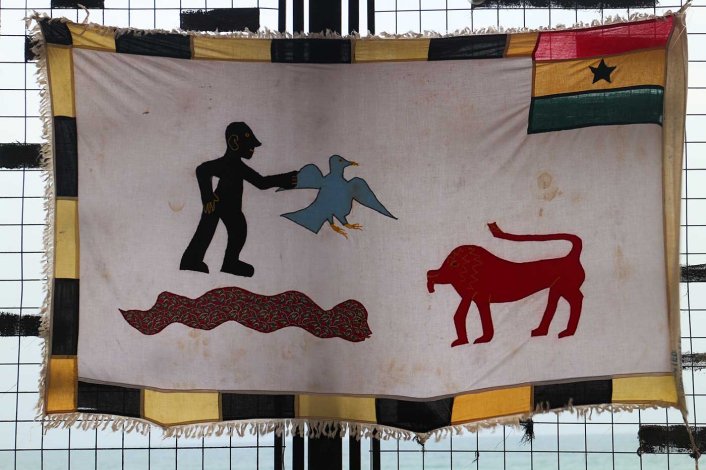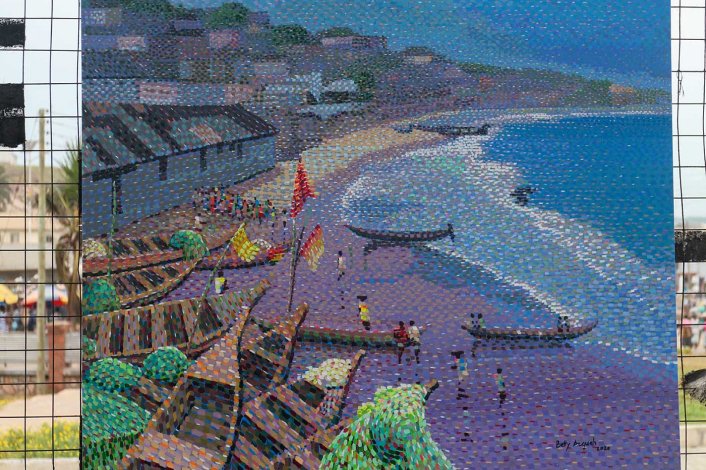Central Region
Elmina, 2020
After the successful completion of the Greater Accra phase of the Mobile Museum, the structure was moved to and found a new home at the Elmina Castle grounds in the Central Region for three weeks.
The objective of the Central Region phase was to explore the Fante culture. Despite the hurdles experienced during the set-up and installation of the works in the Kiosk, we had it up and open to the Elmina community on Wednesday, 4th of March until Sunday, 22nd of March 2020.
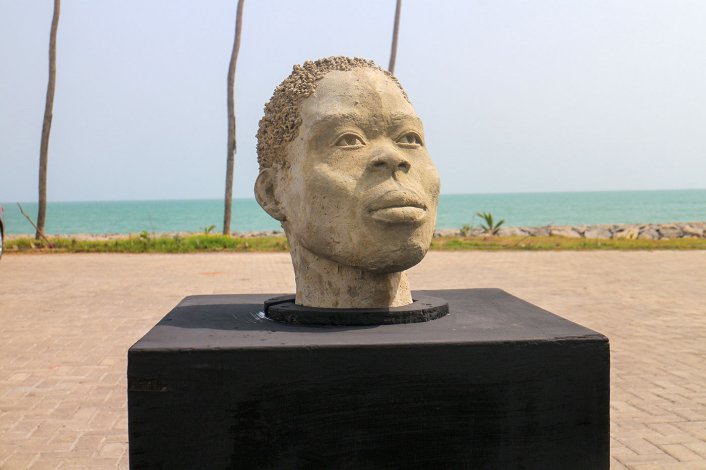
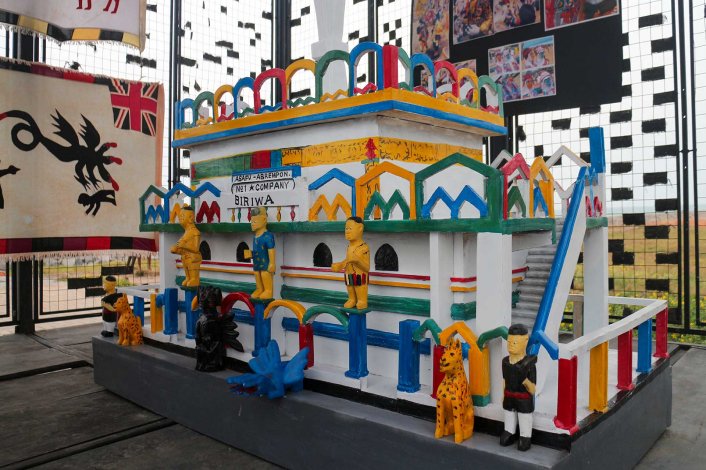
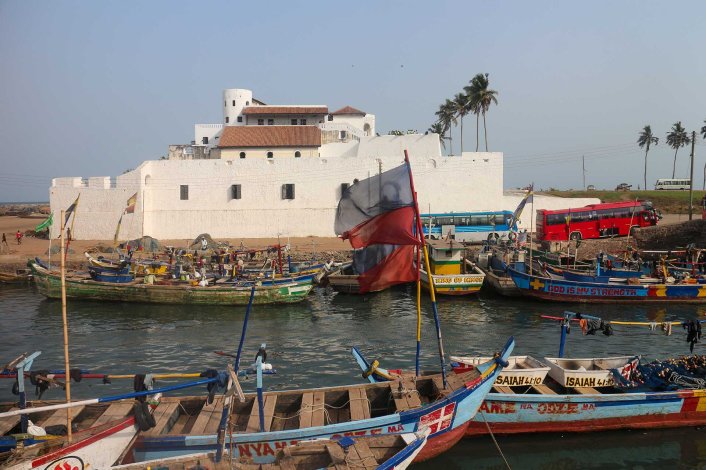
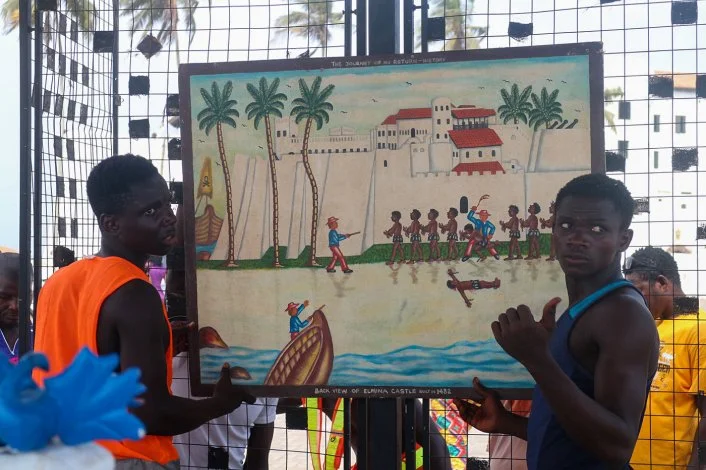
Curation was in three parts, same as in Greater Accra; Curation of the works of the Contemporary Artists (Dr . Awo Sarpong, Betty Acquah, Kwame Akoto-Bamfo and Nana Life who we met in Elmina and was a tremendous help in the setup and general maintenance of the structure at the castle grounds), Film screenings and the curation of the objects that are significant to the Fante people, along with the workshop and series of discussions with key stakeholders and the Elmina Community, which didn’t hold because of the growing threat of COVID-19. We had to temporarily suspend the tour until the virus is contained in Ghana.
In the Central Region, and in Elmina, the Mobile Museum explored the Fante culture. Together, the objects and photographs on display showed the history and colorful cultural practices of the Fante people. Six objects and works were displayed in the Mobile Museum for the Central Region phase of this project.
Two Asafo Flags, also known as Frankaa which are symbols of the Asafo company, were placed side by side.
The Posuban which was placed at the center of the museum is a replica of one of the sanctuaries or shrines used as the local headquarters of the military units called the Asafo Companies.
Betty Acquah’s painting portrayed a typical day on the beachfront behind the historic Cape Coast castle.
The bronze head by Kwame Akoto-Bamfo is a part of the Nkyinkyim installation which consists of about 1,300 heads that pay homage to the ancestors who fell victim to the transatlantic slave trade.
The painting by Nana Life next to the bronze head also depicts the dehumanizing trade exploitation and the captivity of slaves at the Elmina castle.
The photographs by Dr. Awo Sarpong drew the similarities and differences between masquerading in Elmina and Cape Coast. The masquerade art is called “Fancy Dress” because of the fanciful costumes also displayed at the festivals.
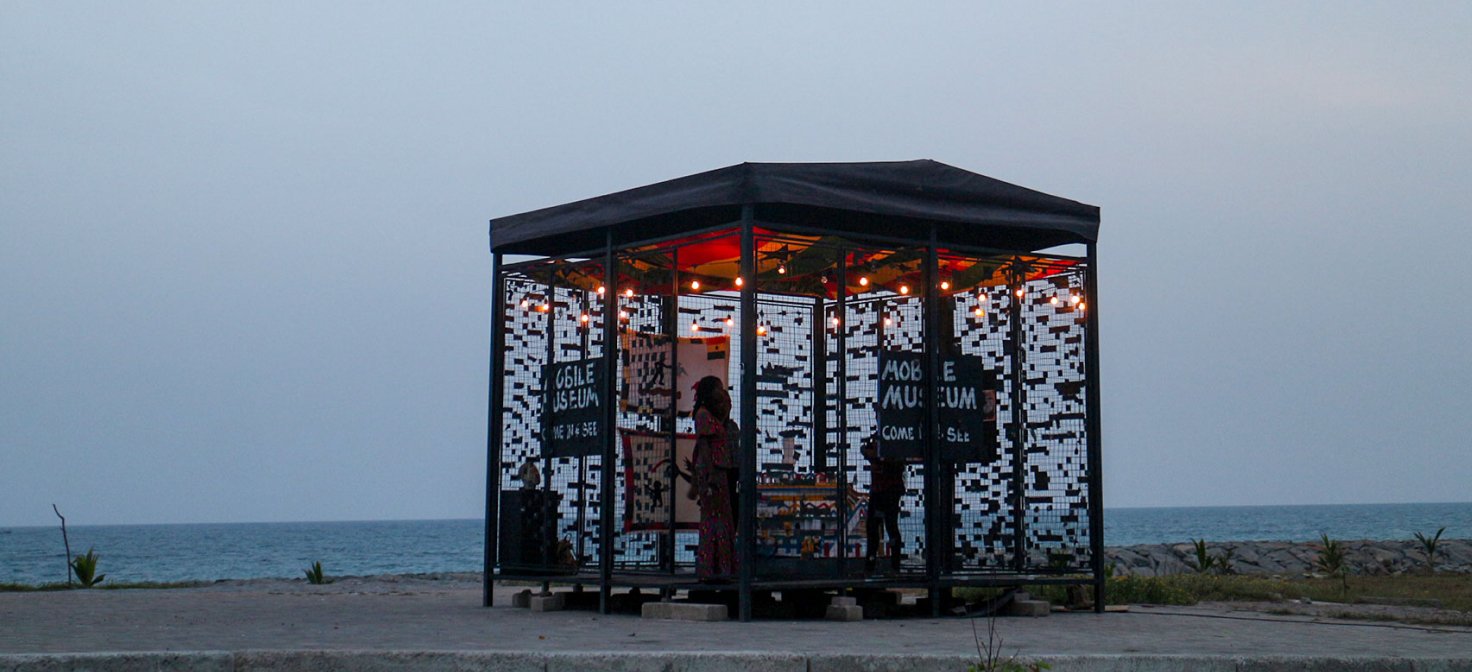
In the first few days, we found that a lot of the people from the Elmina environs were reluctant to visit and explore what was displayed in the Museum. They were rather more comfortable looking out from the outside, but with persuasion from us, they started to come in and also contribute to it as well; by providing more information about the Asafo flags, Posuban and ‘Fancy Dress Festival’ (They recognised the costumes and bragged about having theirs at home). We saw a change in the response to the Mobile Museum as days went by. It was a great idea to have the structure at the Elmina Castle grounds, especially for the vendors who were always present at the car park waiting for the Castle visitors, and also the visitors themselves. Also, having signage in front of the castle drew in a lot of people on their way out of the Castle. The use of signage should be replicated in other regions.
The film screenings brought a sense of community and togetherness. We had about 35–40 people come out of their homes and sit around the structure to enjoy the film screened.
The artists I spoke to were interested in joining us for the workshop and discussion, which led to the idea of having a Community Exhibition where the artists from the Central Region display their works on one of the Afahye days. Abieku was also eager to do a mini-workshop for the kids.
Although our stay there ended abruptly due to COVID-19, we left a lasting impression on the community which was evident in their response to us leaving.
